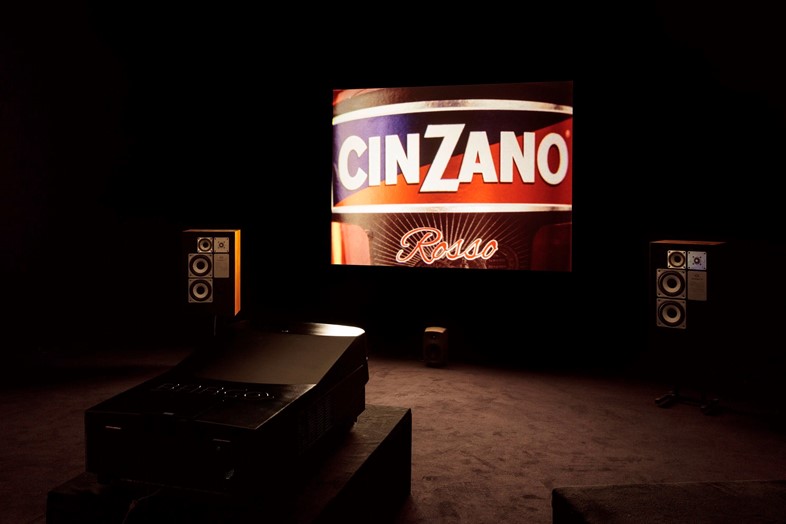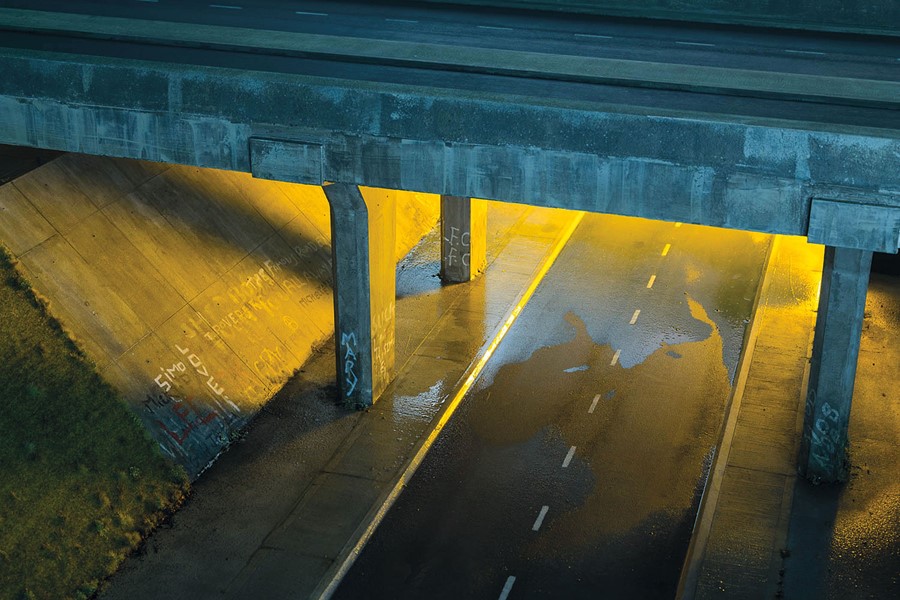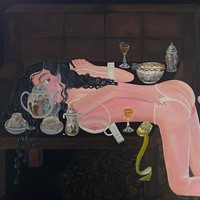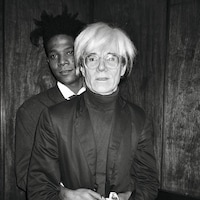At Tate Britain, the Turner Prize-winning contemporary artist has installed a to-scale replica of a motorway flyover that holds the ghosts of his youth
Mark Leckey’s work has always been haunted by the past, loaded with the spirits of grainy memories and half-remembered fragments of youth. The Turner Prize-winning contemporary artist is best known for his seminal video work Fiorucci Made Me Hardcore (1999) and Dream English Kid, collages of collective cultural reminiscence that transport you back to moments in time that you feel like just might belong to you.
Both of these pieces feature in Leckey’s new exhibition O’ Magic Power Of Bleakness at Tate Britain, a hostile takeover of the gallery space in which the artist has installed a to-scale replica of a section of the M53, a portion of motorway flyover on the Wirral that holds the ghosts of Leckey’s childhood.
The bridge has appeared in Leckey’s work before, the result of a supernatural experience he had as a child that he can’t shake off. O’ Magic Power Of Bleakness is a monumental exhibit, and as in ancient folklore, under the bridge acts as fertile ground for fairytales to flourish, with the installation also featuring a new audio play that follows five teenagers underneath a haunted bridge.
While this might be Leckey’s personal dreamland, his ability to weave together pop culture, archive media, and class commentary creates a unique landscape that feels at once completely familiar, yet also far away. We caught up with Leckey at Tate Britain to discuss O’ Magic Power Of Bleakness, the emotional power of motorways, and yearning.
What does this area of motorway mean to you?
Mark Leckey: I used to hang around the motorway bridge with my mates, which I’ve got no real memory of. When I was about 19,21, I went to back to tech college to re-do my O-Levels, because I wanted to go to arts school. We were asked to write about a childhood memory or something – and I wrote about this time I was under this bridge and I saw what I thought was a pixie, a fairy or some kind of like spirit – some small creature manifested underneath the bridge. And I wrote this story about this memory, and as I wrote the memory of it, I realised that up to that point, up until my late teens, I’d absolutely accepted that happened to me because it was an event in my life. But the rational young adult in me realised that was impossible, so the sort of spell was broken.
“That’s what the show’s about, I think. It’s about remembering and delusion, and how delusions feed into your memory and fantasy” – Mark Leckey
How did that change you?
Mark Leckey: I don’t know if it changed me, but it stuck with me for some reason and I don’t know why. I guess it’s something to do with some kind of transition between coming of age. You realise these things, or you kind of doubt your own experiences. That’s what the show’s about, I think. It’s about remembering and delusion, and how delusions feed into your memory and fantasy. To me it feels medieval – that there’s these little competing or co-existing states – and hard, truthful reality seems kind of quaint.

A lot of your work is about misremembered moments, lost in time. What is it about those kind of fragments that capture your imagination?
Mark Leckey: The reason to me, to make something, is to try and produce some kind of intensity. It’s the reason why I choose these moods. They are moments that already had these kind of intense experiences. So I’m looking for the material in order to make something that will have that kind of effect. There’s that, but I think it’s something to do with where I’m from, and believing that these experiences have meaning, have value. They haven’t got the same cultural weight of something like this (Tate Britain), but to me they have.
Acid house is being reflected upon right now, and to me it feels like there’s a fondness for it again, and perhaps a determination to return to culture like that. Why do you think that is?
Mark Leckey: I don’t know to be honest. It’s kind of weird to see because I remember at that time part of the thrill of it was that it was re-living ’68, re-living the Summer Of Love. There was the sense that our generation had been atomised, and we could gather together again as they did back then. Although it was future-facing in some way, there was a nostalgic element to it, to escape that sense of alienation. So I think it’s just a continuation of that, a desire to be physically together again.
“The reason to me, to make something, is to try and produce some kind of intensity” – Mark Leckey
Can you talk me through the title O’ Magic Power Of Bleakness?
Mark Leckey: I like it. I’ve hit and missed with titles sometimes.
Fiorucci Made Me Hardcore’s a good title, so’s Dream English Kid.
Mark Leckey: They’re good ones. I’ve had some bad ones as well. When I’m good, I’m good. It’s another list of things I’m most kind of proud of, like ’Ah, I can do a good title’.
Everyone’s ripped off ‘Fiorucci Made Me Hardcore’.
Mark Leckey: Yeah, that’s gotten around, innit. Fiorucci themselves have ripped it off. But I’ve ripped it off, so I’ve got no complaint. O’ Magic Power Of Bleakness is from a very early live version of Jonathan Richman’s “Roadrunner”. It’s the one where he’s just driving around Boston, in the suburbs of Boston. he’s got a radio one, and he just becomes thrilled about being alive – it’s this kind of magic. I liked it because it sounded a little medieval. The magic power of bleakness is about being raised in this post-war municipal landscape. A lot of the architecture in those buildings could be depressing, but they gain this aura around them.




